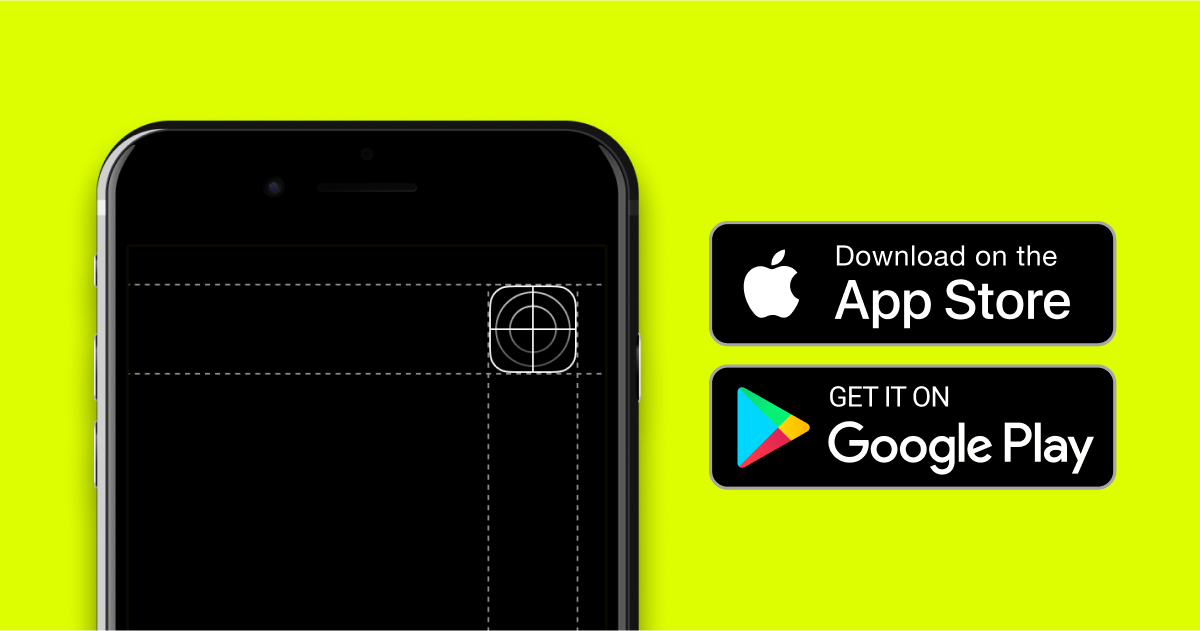
You have been developing an app for years, making adjustments, overcoming obstacles, and dealing with stress. But now, your creation is finally completed and you’re ready to share it with the world.
But, here’s the question: how to share your app with the world? You need ASO. And if you’re not familiar with it — don’t worry. H1 is here with answers and a guideline to help!
But, here’s the question: how to share your app with the world? You need ASO. And if you’re not familiar with it — don’t worry. H1 is here with answers and a guideline to help!
What is ASO Marketing?
ASO stands for App Store Optimization. With its help, companies improve their app's visibility and user appeal in app stores and increase conversion rates to get more downloads.
Today the most popular app stores are the App Store for iOS and Google Play for Android.
Today the most popular app stores are the App Store for iOS and Google Play for Android.
Why is ASO Important?
According to 2022 statistics, Google Play holds around 2.6 million apps on its platform.
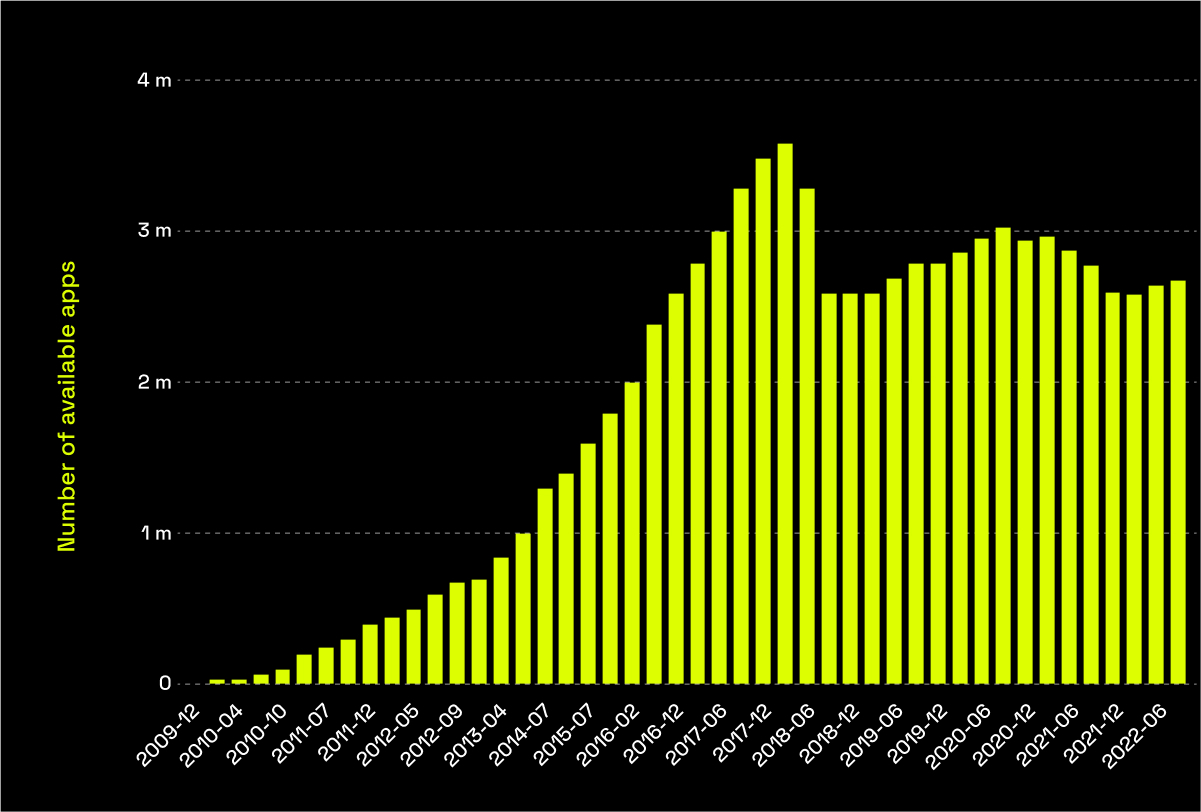
While the App Store opens access to more than 3.8 million apps.
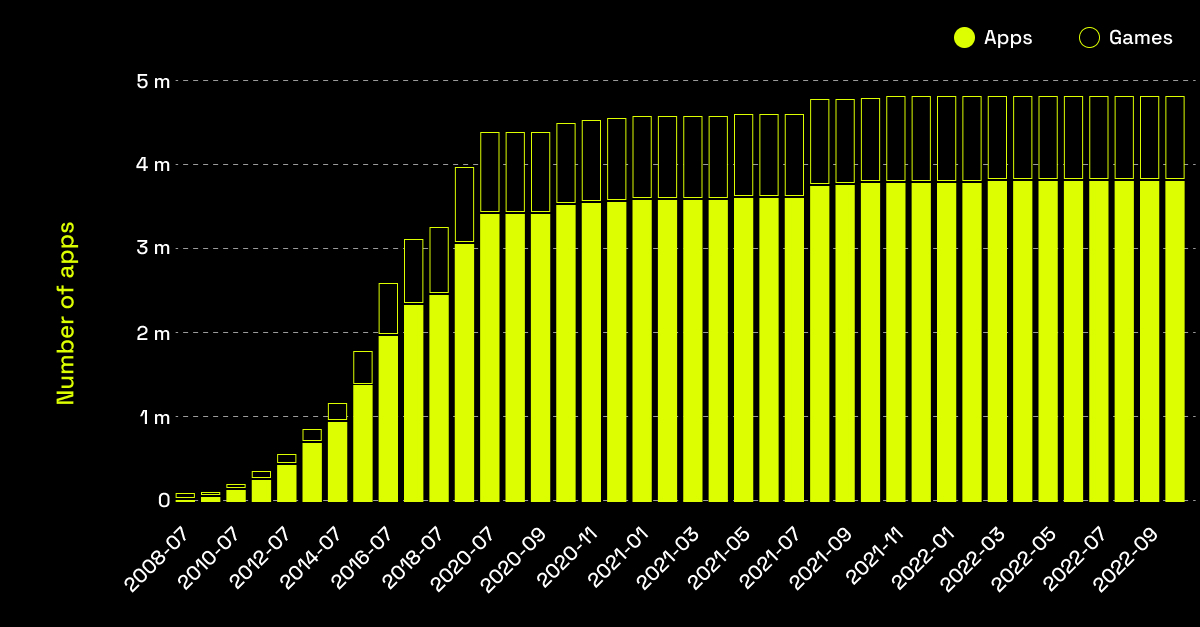
Source: https://www.statista.com/statistics/268251/number-of-apps-in-the-itunes-app-store-since-2008/
It means that there are more than 6 million apps being listed on the two biggest platforms, making it extremely challenging to actually get your app to appear for people.
That’s why it’s crucial for one to understand how those app platforms work and adapt to them. It’s the key to more downloads, better ranking, and overall high performance of your app. So, let’s get started and understand what we’re going to deal with.
That’s why it’s crucial for one to understand how those app platforms work and adapt to them. It’s the key to more downloads, better ranking, and overall high performance of your app. So, let’s get started and understand what we’re going to deal with.
The App Store vs. Google Store
Before diving into ASO utilization, you first need to understand the key differences between the App Store and Google Store.
Though the exact information on platforms’ algorithms is unavailable, it is possible to conclude factors that influence the app rankings:
Though the exact information on platforms’ algorithms is unavailable, it is possible to conclude factors that influence the app rankings:
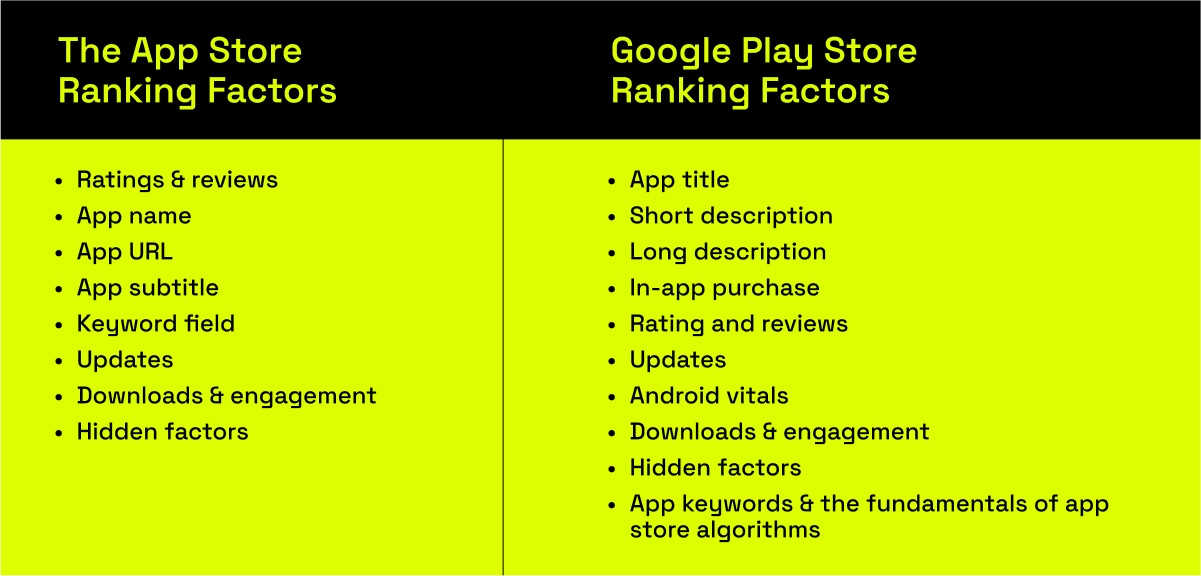
Now when we understand the key differences between the platforms, time to go through each point and see how to work with them.
App Title
As we have stated, the title is an essential factor in search ranking for both Google and Apple app stores. Creating a good title can take some time as it should be both unique and very short.
What’s more, the search ranking algorithm handles the app title as important metadata. So, make sure that it contains one to three of the most relevant keywords. But keep it balanced, don’t make your title unreadable, and don’t forget to stay within limits: 30 characters for the App Store and 30 characters for Google Play.
What’s more, the search ranking algorithm handles the app title as important metadata. So, make sure that it contains one to three of the most relevant keywords. But keep it balanced, don’t make your title unreadable, and don’t forget to stay within limits: 30 characters for the App Store and 30 characters for Google Play.
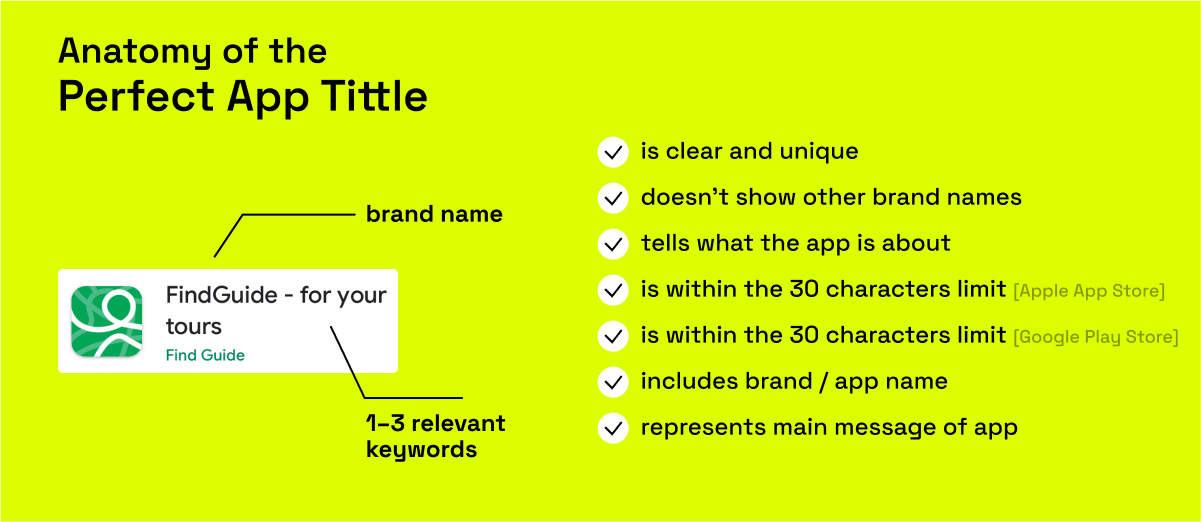
App Description
Your description is really important. From it, people can find out what your app is all about. Make sure to think about interesting aspects of your app that would draw your attention as a user and incorporate it into your description.
The description for Google Play is divided into two fields:
As for the App Store, here you’ll need to consider three fields for describing your app:
Remember: Write the most attention-grabbing features of your app in the Short Description or Promotional Text.
The description isn't displayed fully on the app page, so you need to ensure that people are interested and would want to press the “read more” button. And also, include your most important keywords in the short description and the first paragraph of the full description to influence keyword rankings.
The description for Google Play is divided into two fields:
- Short Description: 80 characters (appear above a Full Description)
- Full Description: 4,000 characters
As for the App Store, here you’ll need to consider three fields for describing your app:
- Subtitle: 30 characters that summerise your app (appear under the title)
- Promotional text: 170 characters (appear above a Full Description and only for iOS 11, masOC 10.13 and newer ones)
- Full Description: 4,000 characters
Remember: Write the most attention-grabbing features of your app in the Short Description or Promotional Text.
The description isn't displayed fully on the app page, so you need to ensure that people are interested and would want to press the “read more” button. And also, include your most important keywords in the short description and the first paragraph of the full description to influence keyword rankings.
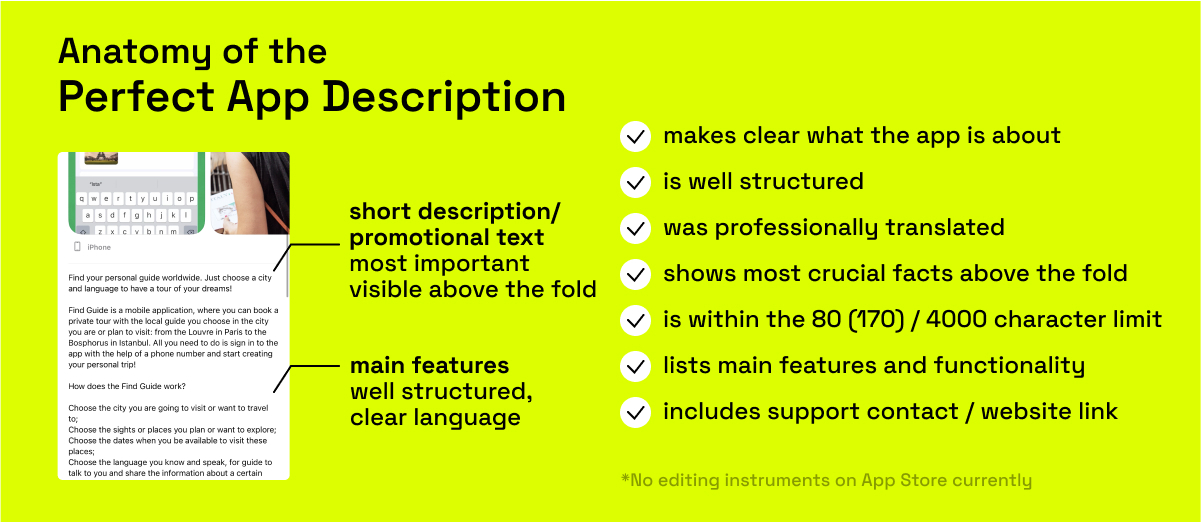
Keywords
The golden rule of keywords: they should be relevant to your app and have the potential to bring more users your way. There are three key steps you need to take to gather keywords that’ll suit your description the best:
Now you need to prioritize your gathered keywords. Some methods that can help you here:
The placement of the keywords for the two app stores differs. The App Store provides developers with a separate field (“Keywords”) where they can write keywords up to 100 characters, separated by commas.
As for Google Play, here you don’t have such an option. All keywords should be used in the text for the description. But, remember: your goal isn’t to write a text full of keywords. It’s better to go for a natural placement of at least 3-5 times.
- Brainstorm and create a list of features that best describe your app
- Conduct competitor and market research, looking at what others are using for similar apps
- Use some third-party service that helps gather keywords for your request
Now you need to prioritize your gathered keywords. Some methods that can help you here:
- Search volume data — choose keywords that have enough search volume to not waste your metadata.
- Current keyword ranking — make sure that you don’t remove the most valuable keywords from your current metadata.
- Keyword relevance — ensure that you use target-relevant keywords.
- Keyword competition — target keywords that have the most research results. Though they’re more competitive, they also provide a higher research volume for your app.
The placement of the keywords for the two app stores differs. The App Store provides developers with a separate field (“Keywords”) where they can write keywords up to 100 characters, separated by commas.
As for Google Play, here you don’t have such an option. All keywords should be used in the text for the description. But, remember: your goal isn’t to write a text full of keywords. It’s better to go for a natural placement of at least 3-5 times.
Ratings & Reviews
It’s not a secret that ratings and reviews are what people first notice when discovering an app. Not to mention, that those factors greatly influence both Google Play and App Store algorithms. So, there are several approaches you need to take related to your reviews:
- Always track how your ratings and reviews move and evolve over time
- Actively work on gathering more ratings
- Reply to user reviews and reply to negative reviews with the aim that these users will change their rating
- Use the information users provide to constantly improve your app and perform better market research
- Your goal is to have a rating of at least 4.4
Downloads
As you’d expect: more downloads equals more users. Increasing downloads support increased prominence within the app store’s organic ranking.
What can you do to increase your downloads? Consider integrating your marketing channels outside of the store to attract more users. Identify where most people are coming from and target this platform.
What can you do to increase your downloads? Consider integrating your marketing channels outside of the store to attract more users. Identify where most people are coming from and target this platform.
App Updates
You need to update your app listing to optimize your keywords and make sure that your search results don’t go down. However, not all updates are good for your app. Here, you need to follow specific rules and know how the algorithm works with your updates:
- Check which keywords your app is ranking for
- Throw away all low-performing keywords and change them for more popular relevant ones
- For your new keywords to be indexed by the Google Play algorithm, make sure to way for 6-8 weeks between your updates. During this time start searching for new keyword rankings.
- As for the App Store, you can do updates every 4 weeks. Here the algorithm adapts your new listing’s data faster, but its effect is also shorter.
Graphic Requirements for Google Play
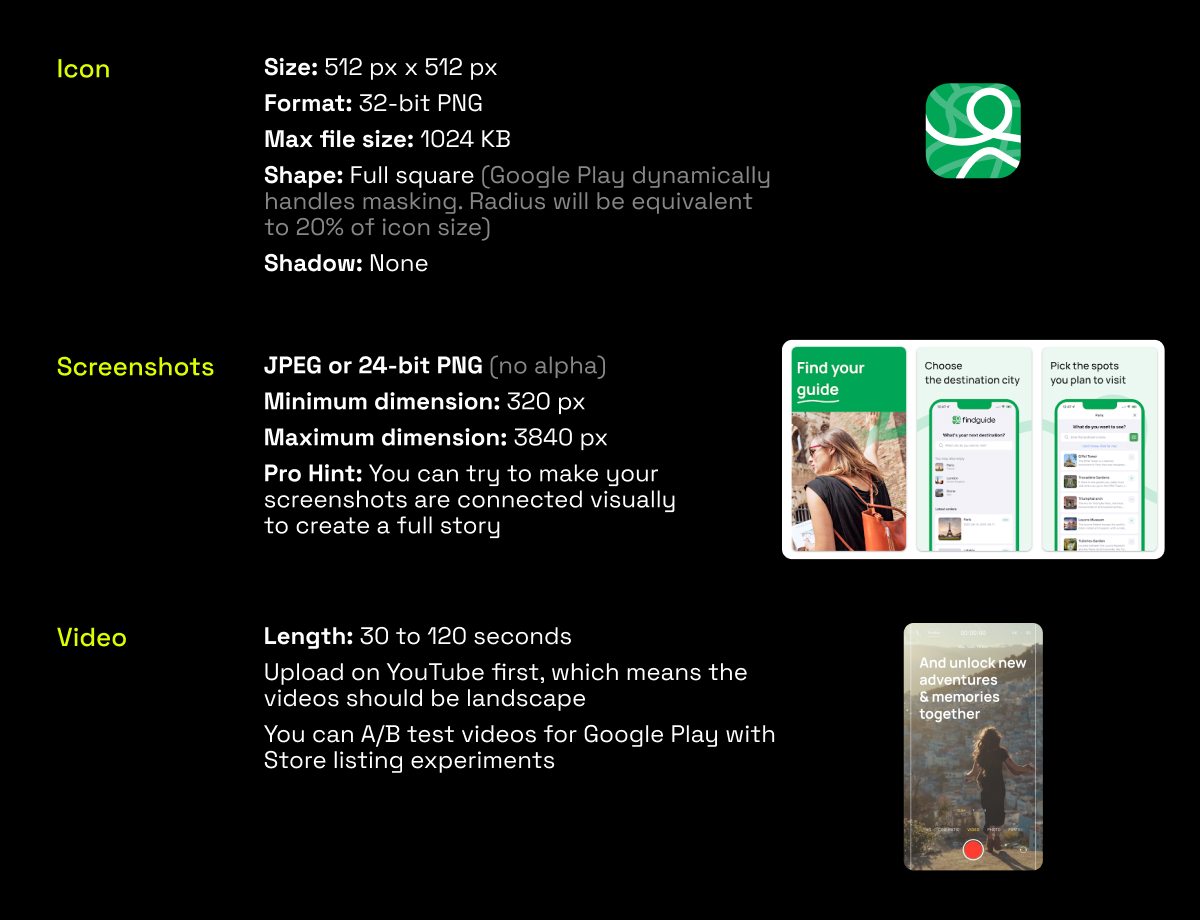
Graphic Requirements for App Store
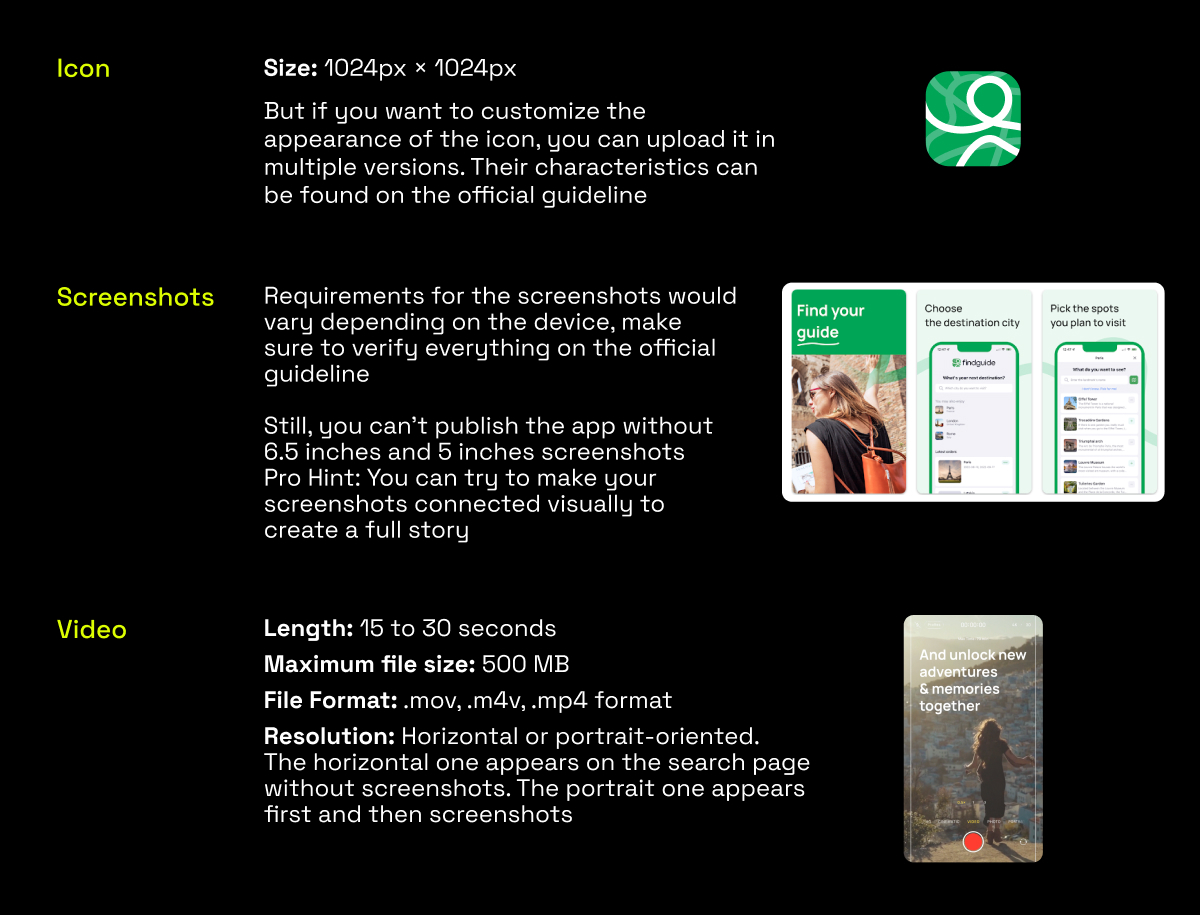
Do you need help with ASO for your app? Contact H1 Marketing and we’ll be happy to help!